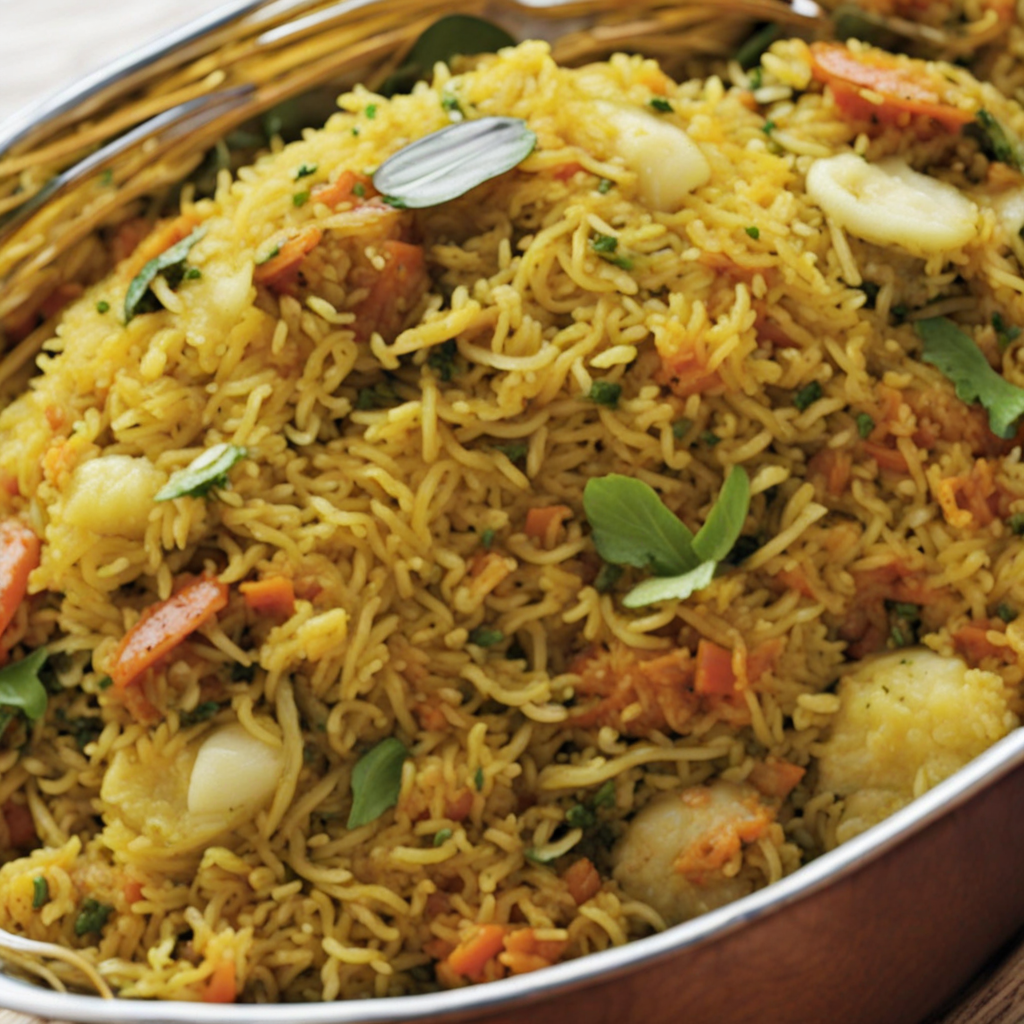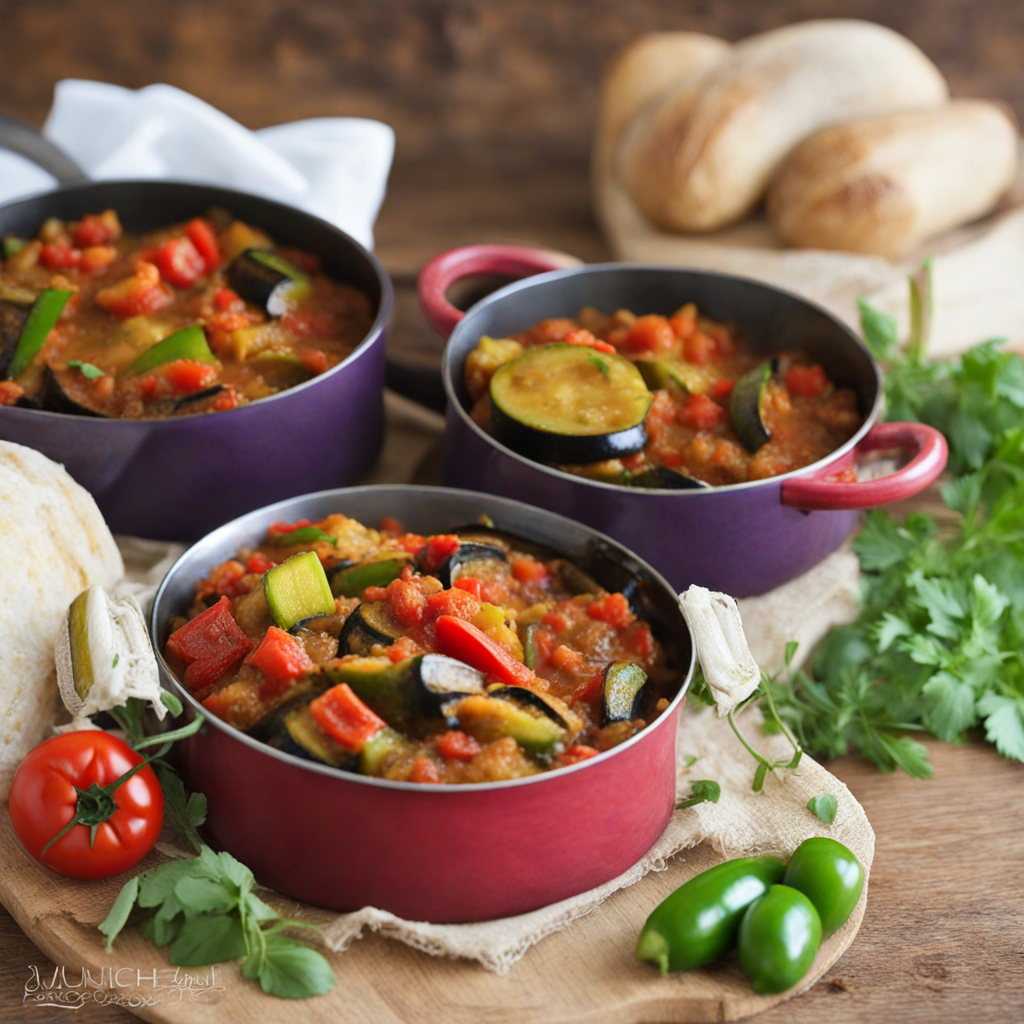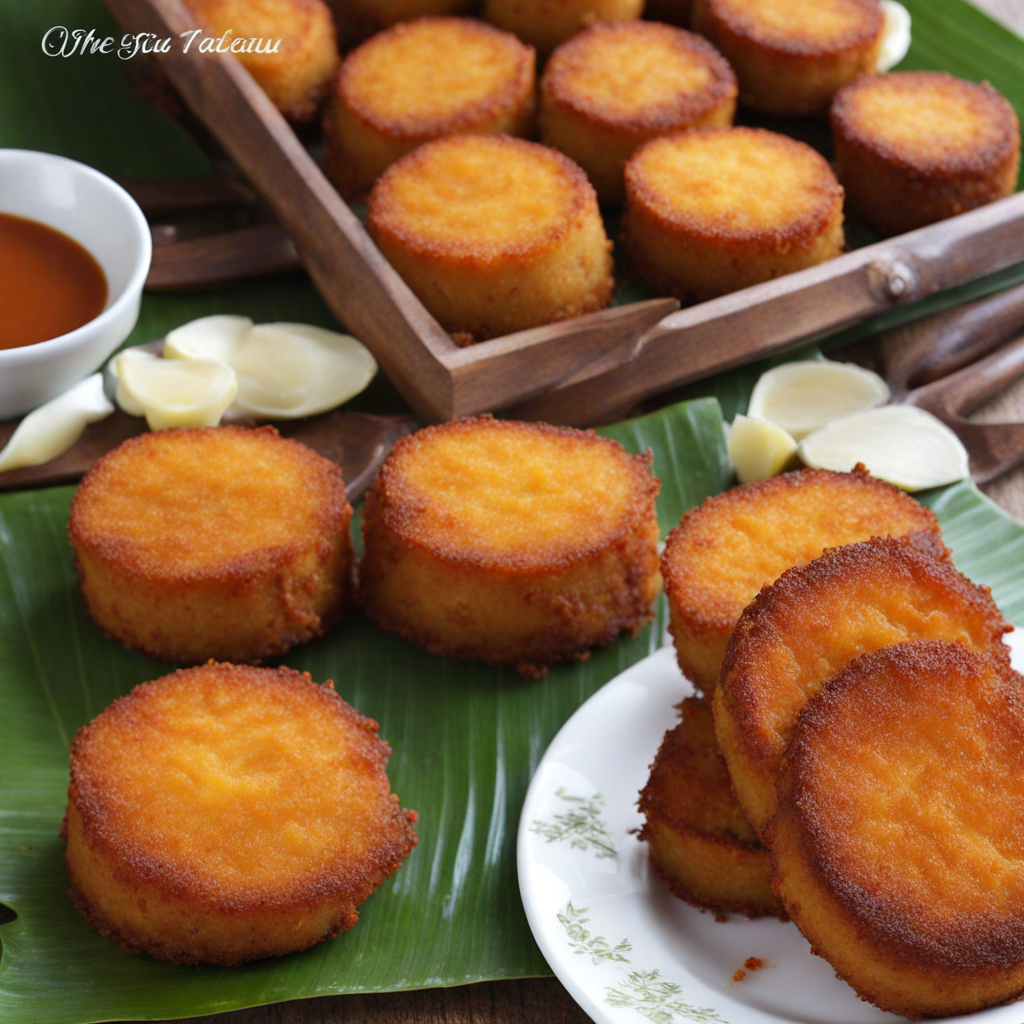Vegetable Briani
Vegetable Briani is a vibrant and aromatic dish that showcases the unique culinary heritage of Mauritius, a beautiful island nation in the Indian Ocean. This flavorful rice dish is a delightful medley of basmati rice, a variety of fresh vegetables, and a harmonious blend of spices, all cooked together to create layers of taste and texture. The vegetables often include potatoes, carrots, peas, and green beans, which not only add color but also contribute to the dish's wholesome and nutritious profile. Each bite is a burst of flavor, with the spices infusing the rice with warmth and complexity, making it a truly satisfying meal. The preparation of Vegetable Briani is an art in itself, steeped in tradition and rich with cultural influences from Indian, Creole, and French cuisines. The dish begins with the marination of vegetables in a mixture of spices such as turmeric, cumin, coriander, and garam masala, allowing the ingredients to absorb the aromatic flavors. The rice is then cooked separately, often layered with the spiced vegetables in a pot, allowing the steam to meld the flavors together beautifully. This layering technique not only enhances the taste but also creates a visually stunning presentation, often garnished with fried onions and fresh cilantro. Vegetable Briani is more than just a meal; it’s an experience that brings people together, often served during special occasions and family gatherings. It pairs wonderfully with cooling accompaniments like raita (a yogurt-based side) or a tangy salad, which balances the warmth of the spices. Whether you are a seasoned food lover or new to Mauritian cuisine, indulging in Vegetable Briani is a delightful way to explore the island’s rich flavors and culinary traditions, leaving you craving more of its unique taste.
How It Became This Dish
The History of Briani Legim: A Culinary Gem of Mauritius Mauritius, an island nation situated in the Indian Ocean, is renowned for its stunning landscapes, multicultural heritage, and, importantly, its vibrant culinary landscape. Among the many dishes that represent the island's rich tapestry of influences is Briani Legim, a savory rice dish that combines fragrant spices, tender meat, and an array of vegetables. To understand Briani Legim is to delve into the intricate history of Mauritius itself—a journey through time that reflects the island's diverse cultural influences. #### Origins: A Melting Pot of Cultures The origins of Briani Legim can be traced back to the 18th century when Mauritius was colonized by the French and later the British. The island served as a strategic trading post and a hub for the spice trade, attracting settlers, slaves, and indentured laborers from various regions. The culinary traditions brought by these groups began to intermingle, giving birth to a unique Mauritian cuisine. The dish is believed to have its roots in the Indian subcontinent, particularly in the Mughlai cuisine of India, where elaborate rice dishes known as Biryani are a staple. Biryani was often prepared for special occasions and feasts, incorporating aromatic spices, marinated meats, and layered rice. As Indian laborers arrived in Mauritius during the 19th century, they brought with them their culinary traditions, including variations of Biryani. However, in Mauritius, this dish transformed into Briani Legim, adapting to local ingredients and the diverse culinary practices of the island. The term “Legim” refers to vegetables, which signifies the Mauritian twist on the traditional Biryani, integrating the island's agricultural bounty. #### Cultural Significance Briani Legim is more than just a dish; it is a symbol of Mauritian identity and communal harmony. The preparation of Briani Legim is often a communal affair, reflecting the island's spirit of togetherness. Families and friends gather to prepare and enjoy the dish, particularly during celebrations, weddings, and religious festivals. The act of cooking Briani Legim is steeped in tradition, with each family often having its own unique recipe that may vary in spice levels, types of meat, and vegetable combinations. The dish encapsulates the multicultural essence of Mauritius, where Creole, Indian, Chinese, and French influences blend harmoniously. As the island became home to various ethnic groups, the cuisine evolved, incorporating local ingredients such as fresh vegetables, herbs, and spices native to Mauritius. This melding of culinary traditions has made Briani Legim a dish that is representative of the island's diverse heritage. #### Development Over Time As Mauritius progressed through the 20th century, Briani Legim continued to evolve. The post-independence era in the 1960s marked a significant shift in the island's culinary landscape. The newfound national identity inspired a revival of traditional dishes, with Briani Legim taking center stage as a popular comfort food. In contemporary Mauritius, Briani Legim has transcended its humble beginnings and has become a beloved dish served in homes and restaurants alike. Chefs and home cooks are now experimenting with the dish, incorporating modern techniques and flavors while still honoring traditional methods. For instance, while the classical recipe includes lamb or chicken, variations with fish, seafood, or even vegetarian options have emerged, catering to the evolving palates of islanders and tourists alike. Moreover, the dish's presentation has also transformed. Traditionally served in a large communal pot, Briani Legim is now often plated elegantly in fine dining establishments, showcasing the culinary skill and creativity of chefs. This evolution not only reflects changing culinary trends but also emphasizes the dish's adaptability to modern tastes while retaining its cultural roots. #### Ingredients and Preparation The preparation of Briani Legim is an art form that involves a careful selection of ingredients, each contributing to the dish's distinctive flavor profile. The main components include basmati rice, marinated meat (typically chicken, lamb, or goat), and a colorful assortment of vegetables such as carrots, potatoes, and green beans. Spices play a crucial role, with ingredients like turmeric, cumin, coriander, and garam masala lending warmth and depth to the dish. To prepare Briani Legim, the meat is first marinated with spices, yogurt, and sometimes saffron, allowing the flavors to meld. The rice is partially cooked before being layered with the marinated meat and vegetables in a large pot. The dish is then slow-cooked, allowing the rice to absorb the rich flavors of the meat and spices while the vegetables become tender and aromatic. Traditionally, Briani Legim is cooked using a method known as "dum," where the pot is sealed with dough to trap steam, resulting in a beautifully fragrant and flavorful dish. The final presentation is often garnished with fried onions, fresh herbs, and boiled eggs, enhancing its visual appeal. #### Briani Legim in Modern Mauritius In recent years, Briani Legim has gained international recognition, with Mauritian restaurants and chefs showcasing the dish at food festivals and culinary events worldwide. The global interest in Mauritian cuisine has sparked a renewed enthusiasm for local dishes, encouraging chefs to experiment and innovate while staying true to their roots. Furthermore, the rise of food tourism in Mauritius has led to culinary workshops and tours centered around traditional dishes like Briani Legim. Visitors are invited to experience the dish's preparation firsthand, learning about the cultural significance of each ingredient and the communal aspects of cooking. Such initiatives not only preserve the culinary heritage of the island but also foster a greater appreciation for its diverse culture. #### Conclusion: A Culinary Legacy Briani Legim is a testament to the rich history and cultural diversity of Mauritius. Its evolution from a dish rooted in Indian culinary traditions to a symbol of Mauritian identity reflects the island's journey through colonization, migration, and globalization. Today, Briani Legim stands as a beloved comfort food, embodying the spirit of community and celebration that is intrinsic to Mauritian culture. As the world becomes more interconnected, dishes like Briani Legim serve as a reminder of the power of food to transcend borders, bringing people together and celebrating shared histories. In every bite of Briani Legim, one can taste the legacy of Mauritius—a legacy that continues to evolve while remaining deeply rooted in its past.
You may like
Discover local flavors from Mauritius







